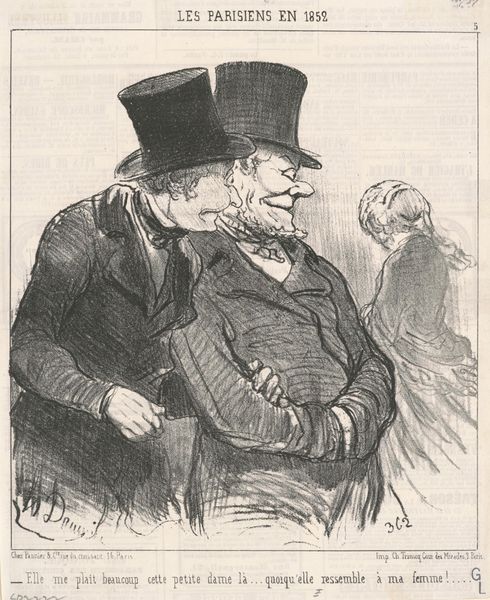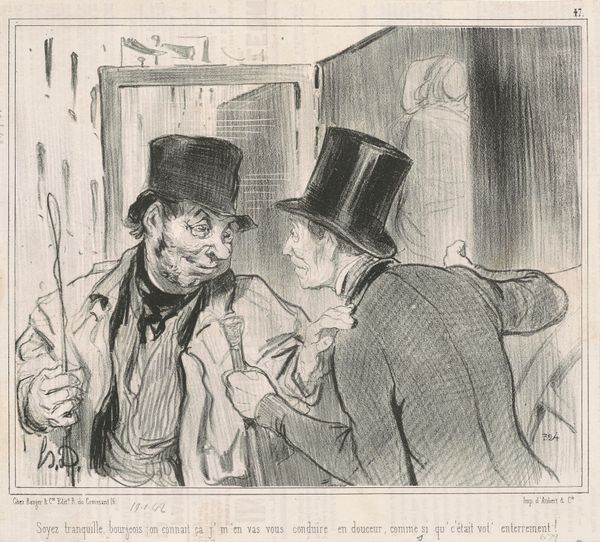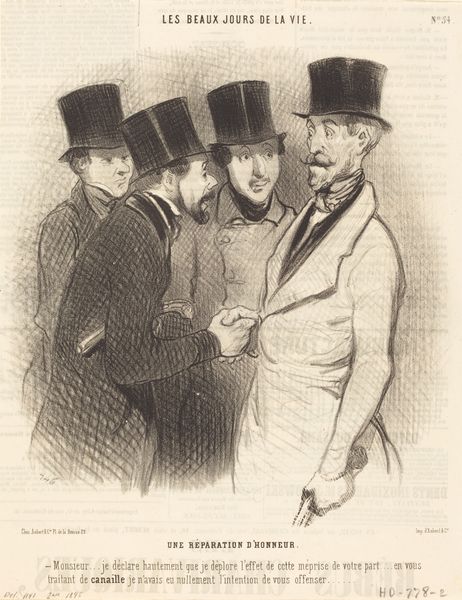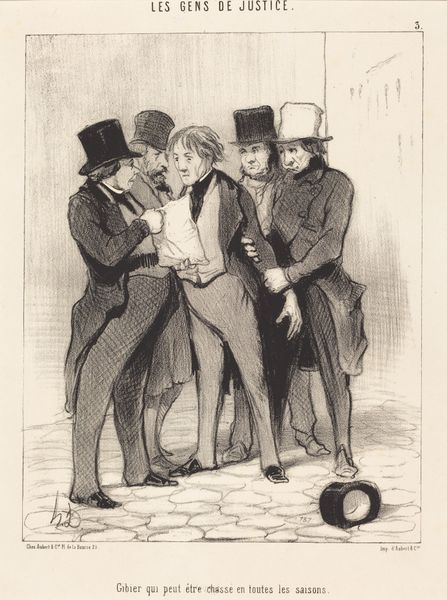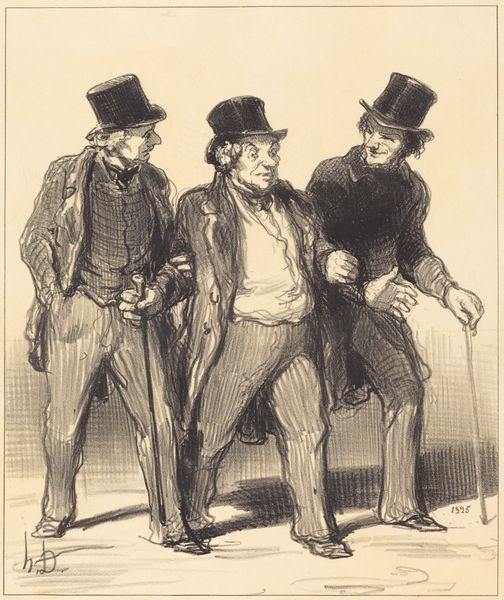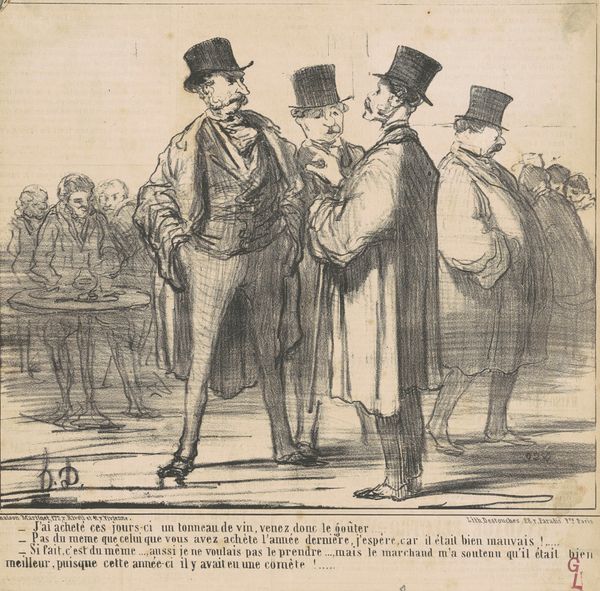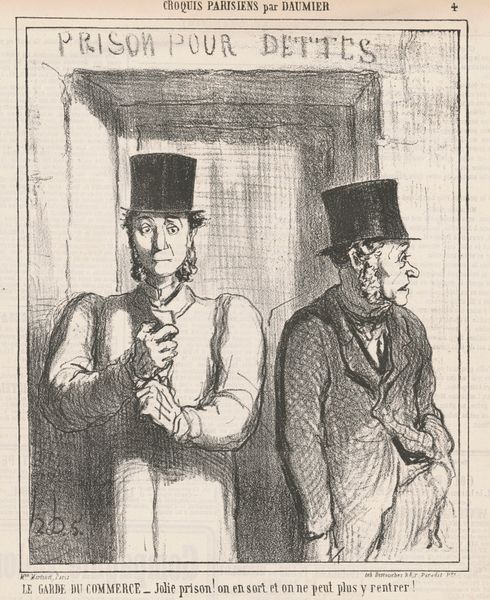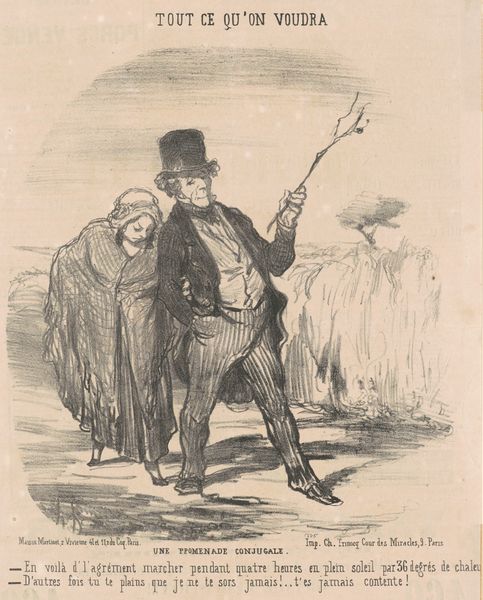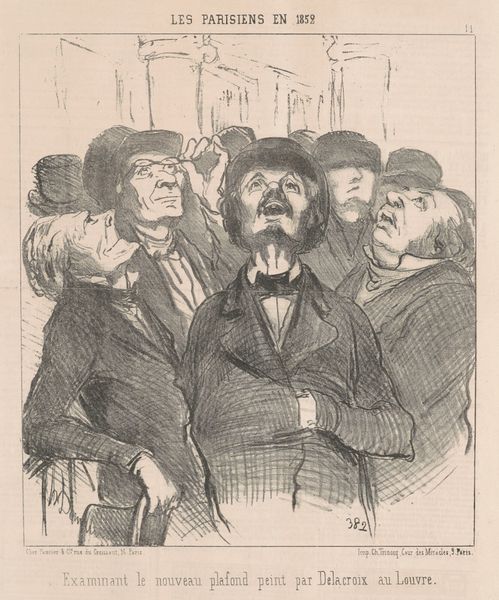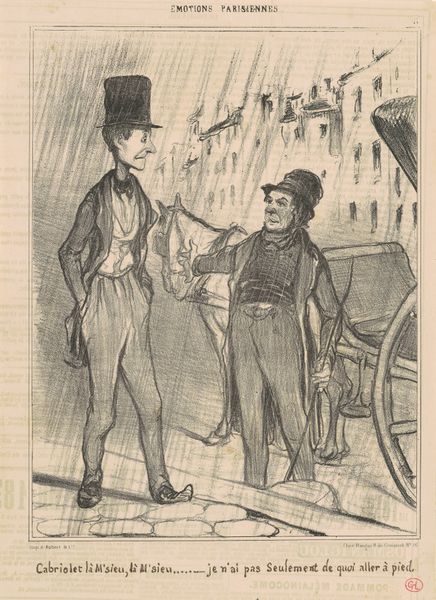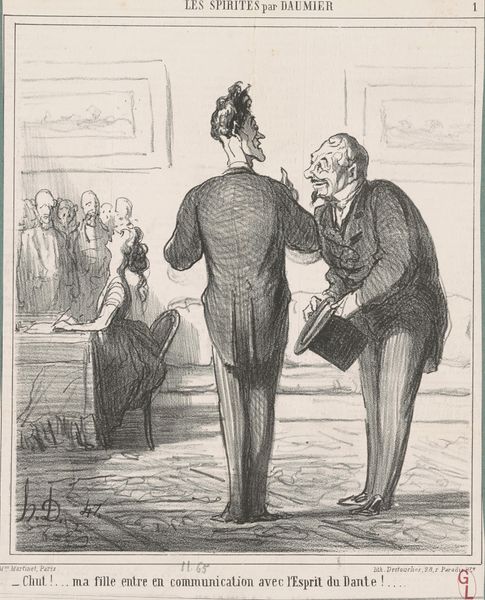
lithograph, print
#
lithograph
# print
#
caricature
#
romanticism
#
genre-painting
Copyright: National Gallery of Art: CC0 1.0
Curator: This lithograph, "Un jour de représentation à bénéfice," created by Honoré Daumier in the mid-19th century, plunges us into Parisian society. What strikes you immediately about it? Editor: It’s quite droll, actually. The exaggerated features of the figures, those tall hats and jutting chins, lend it a humorous, almost satirical quality. There's an air of self-importance about them, peering upwards, though it feels a little forced. Curator: Daumier was a master of social commentary. These aren’t just portraits; they are character studies of the bourgeoisie during the reign of Louis-Philippe. The "benefit performance" in the title hints at a special event, perhaps a charitable cause, and the figures, having "paid ten francs for their seats" as the caption informs us, seem eager to display their affluence and good intentions. Notice the symbolism of them literally "looking up" to a status symbol in order to seem dignified. Editor: Exactly, it's like they're trying too hard, don't you think? The starkness of the print emphasizes their strained expressions. It speaks volumes about the performative nature of class in 19th-century Paris. One almost senses that the promise of higher social rank for them through purchasing these places will remain "à louer," always just beyond their grasp. The "LOUÉE" sign in the image mirrors this unattainable goal, I think. Curator: I agree. Daumier cleverly utilizes caricature to highlight the perceived superficiality of this emerging middle class, who wished to be taken for "old money" royalty. While appearing to follow Romantic aesthetics, there’s a genre painting essence here as well. You see Daumier taking his cues from street life while using lithography's capabilities to give many people access to his commentary on their social values, even if through comedy. Editor: It’s fascinating how a seemingly simple print can unpack such complex social dynamics. This piece highlights the very politics of imagery, really. The piece’s wide distribution meant many others were likely exposed to its sardonic sentiment at the time as well, sparking conversations, solidifying sentiments, and revealing public opinion about art itself. It asks its audience whether these caricatures, or any art that attempts to represent class, is actually depicting its subjects accurately, or simply acting out a farce in its own right. Curator: Indeed. Daumier offers us a glimpse into a pivotal moment of social change, inviting us to question the symbols and performances of power in our own lives. Editor: It serves as a sharp reminder of how art can capture the subtle, sometimes absurd, theatre of human aspiration across time.
Comments
No comments
Be the first to comment and join the conversation on the ultimate creative platform.
